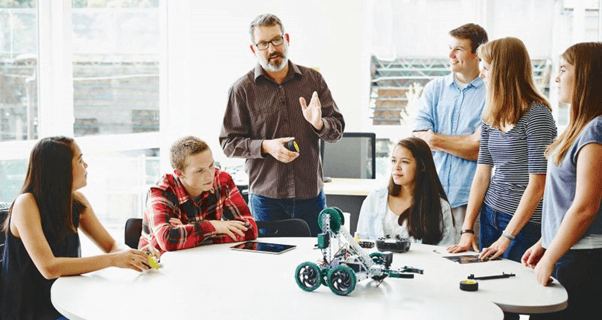Thanks to the many technological advances, formal education has changed a lot in the recent few years. One of the technologies that are bound to have the most impact is educational 3D printing.
The impact of 3D printers in modern education is a far cry from the present use of electronic whiteboards and tablets, but their road is paved. Research and studies indicate that 3D printing in the education process brings enormous benefits to students from all categories.
The benefits of 3D printing in education
One of the many benefits of educational 3D printing is that it can be used as an educational tool across various subjects such as archeology, art, science, design, engineering, biology, geography, architecture, and so on.
A recent study conducted by Macquarie University in Australia brought to life a set of interesting conclusions on how 3D printing influenced education. Here are some of their main discoveries:
- 3D printing helps educators to explain complex issues in various subjects to their students.
- Students feel more motivated and engaged to explore various 3D projects. According to the study, 3D printing can achieve that “wow factor” that keeps student engagement high.
- It brings out the entrepreneurship spirit in students.
- 3D printing helps students learn new skills. The learning process doesn’t stop with the 3D printer but expands in the world of 3D design and CAD programs.
- Also, it gives students the confidence they need to work on an idea. It helps them move from the conception of an idea to its physical manifestation as an actual thing they can hold in their hands.
The number of benefits doesn’t stop there, but it goes well beyond. However, the idea is not to list everything but to point to the value of 3D printing in the educational process.
How do students and teachers use 3D printing in the classroom?
As mentioned earlier, 3D printing can be implemented in almost all educational subjects, especially in engineering, technology, math, and science classes. Here are some examples of how students and teachers use 3D printing in their classrooms.
- A group of students from the Murtaugh School District, in the state of Idaho, used their 3D printer to make a motion-sensing alarm that was powered by solar power and whose main purpose was to keep elk and deer out of the fields.
- An eighth-grader from the Harlan Rowe Middle School in Athens, Pennsylvania successfully designed, and 3D printed a new holder for his school’s badminton net.
- In South Carolina’s Technology Center, a team of students manufactured a wheelchair for an impaired dog.
To conclude
The benefits of educational 3D printing are overwhelming. It’s even more fascinating that students are hooked on it from the moment they are introduced to 3D printing. Deeper learning, increased engagement, strengthening of workforce skills, are just a preview of what 3D printing brings to the table.
However, implementing 3D printing technology in all schools and making it accessible to all students equally is by far the biggest challenge. The day isn’t far when 3D printing becomes a regular curriculum in schools.

